“OPEN
CALL”
ANNOUNCING THE WINNERS
We’re delighted to present the results of our August competition judged by Dilys Ng, Senior Photo Editor at TIME.
By removing the constraint we usually set with our competition theme, an Open Call creates space for all sorts of strange and wonderful photography that might not find a home under a specific topic, and for entrants to submit their standout standalone images, unshackled by a brief. But it also creates a challenge – how does a judge form their selection without the bearings of a theme to guide them? How do they arrive at a cohesive selection of images? The answer of course is to rely only on the universal qualities of good photography – technical execution, storytelling, emotion and originality – and to celebrate quite the opposite of cohesion: diversity. And so we find here a selection of 20 thematically and stylistically varied images that stand out for their skilled production, interesting subject matter and creativity, and that between them represent a broad and engaging selection of contemporary photography.
Congratulations to the selected photographers, and thank you to everyone who submitted. You can join the discussion on Facebook and Instagram.
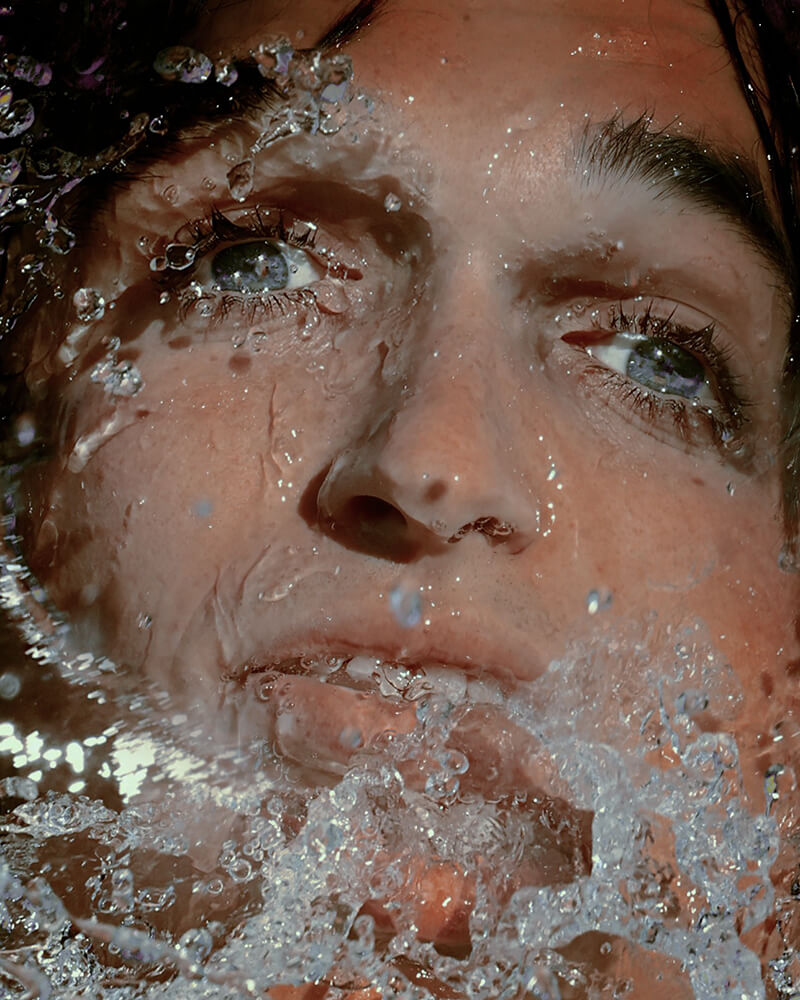
“I chose this image because I can’t stop questioning what I’m looking at. From the almost eye contact to the gel-like water splash to its peculiar melting quality. The overall uneasiness of the picture is what’s most intriguing, and feels like a constant waver between fiction and reality.” – DILYS NG
Photographer statement – From the series Slightly Odd And Kind Of Uncomfortable – an ongoing study into; un/comfort, emotion through motion, and mental health. This image: ‘BOY/KIND’. I wanted to visually depict that feeling of pressure, from society, social media, your family, or a partner and how that sometimes can feel engulfing or suffocating.
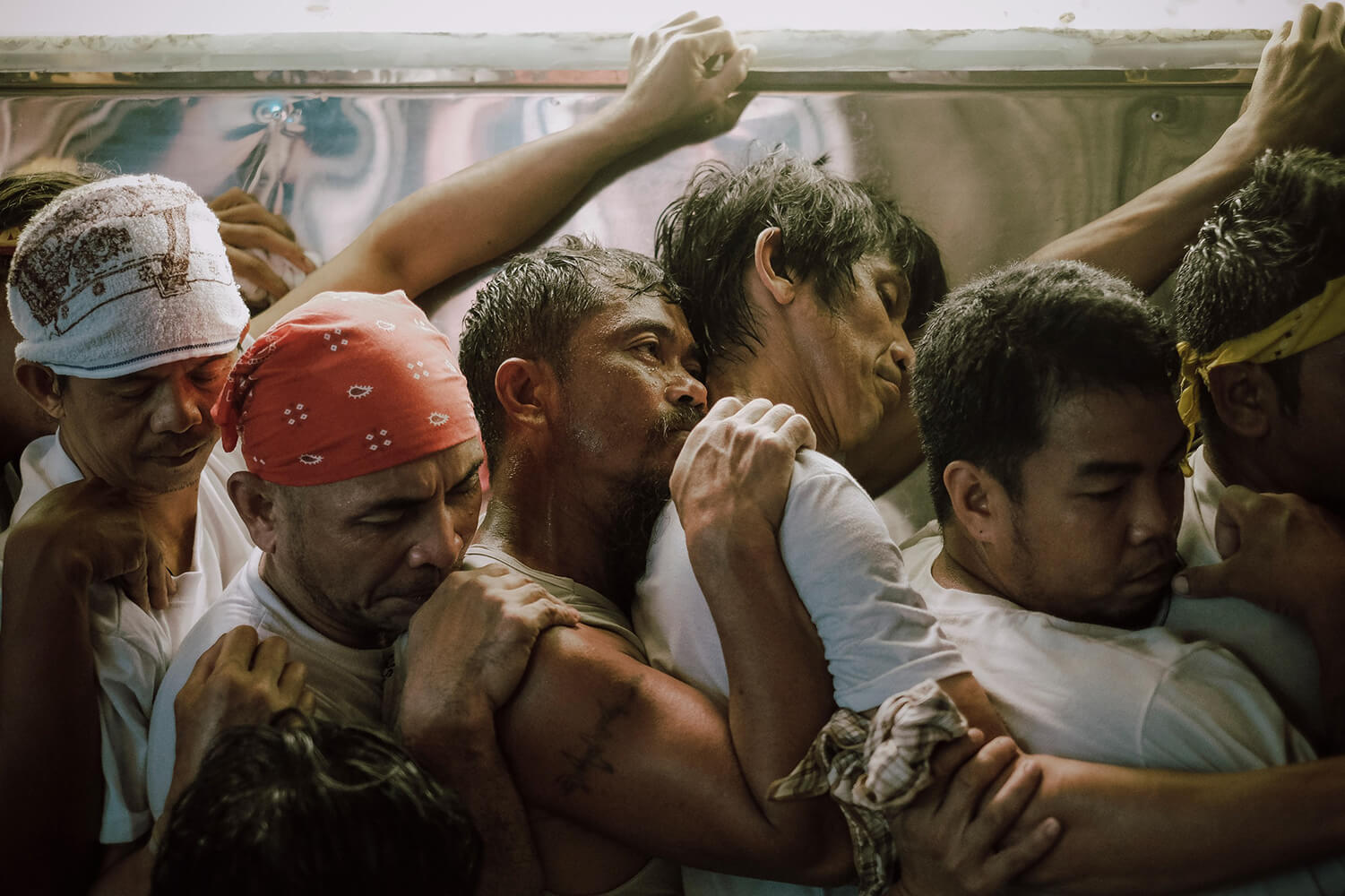
“You can’t help but feel both misery and relief all at once in this image. The lighting feels spiritual and the composition, painterly.” – DILYS NG
Photographer statement – I was in my hometown documenting the events happening during Holy Week. I’ve always wanted to capture the beginning to the end of this so-called procession of the “mahal na senyor” or “image of the dead Christ,” wherein hopes and promises are the main reasons many people perform these rituals. They believe it will bring luck, success, conceive a child, and even cure sickness. As I was looking for the right moment, I saw this group of men on the side of the glass carriage, and quickly got my backup camera with a 35mm lens so I could be closer and compose it tightly in the frame. Beyond lighting, composition, aesthetic, and expression, there’s more to it than meets the eye. At that moment, I knew something extraordinary had caught my camera, and a year later, I am still moved by this image. Perhaps it is the purpose of the rituals that affect me deep within.
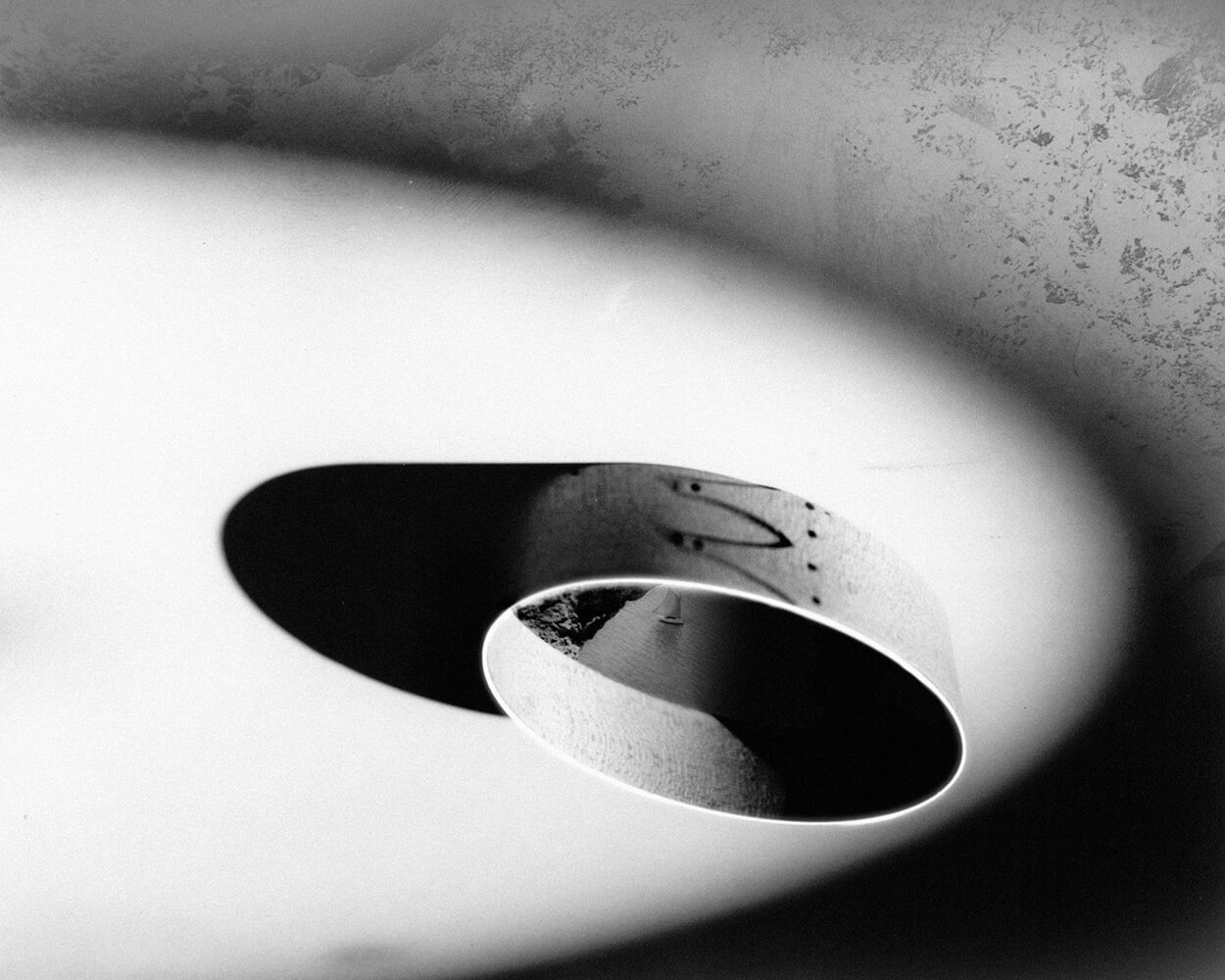
“This highly intriguing image seems to operate at a number of scales – an eye, the ring system of a planet, an airplane window looking down onto the sea, and beyond that onto a distant desert… It’s arresting because it feels strange, alien and unfathomable – both in what we’re seeing, and in the tools and techniques Peter used to created it. It’s truly experimental photography that works on an almost subliminal level, and about which we’d love to know more from the photographer.” – LIFE FRAMER
Photographer statement – From the series Pictures Of/At An Art Exhibition. Imagine you would enter these exhibition rooms. Open air or in small niches. On walls or ceilings, in showcases or heavy gold frames. Everything would be in black and white and the light would be within reach. Every work of art would have its perfect place and the pictures of those places would be perfect works of art. Where would you present them..?
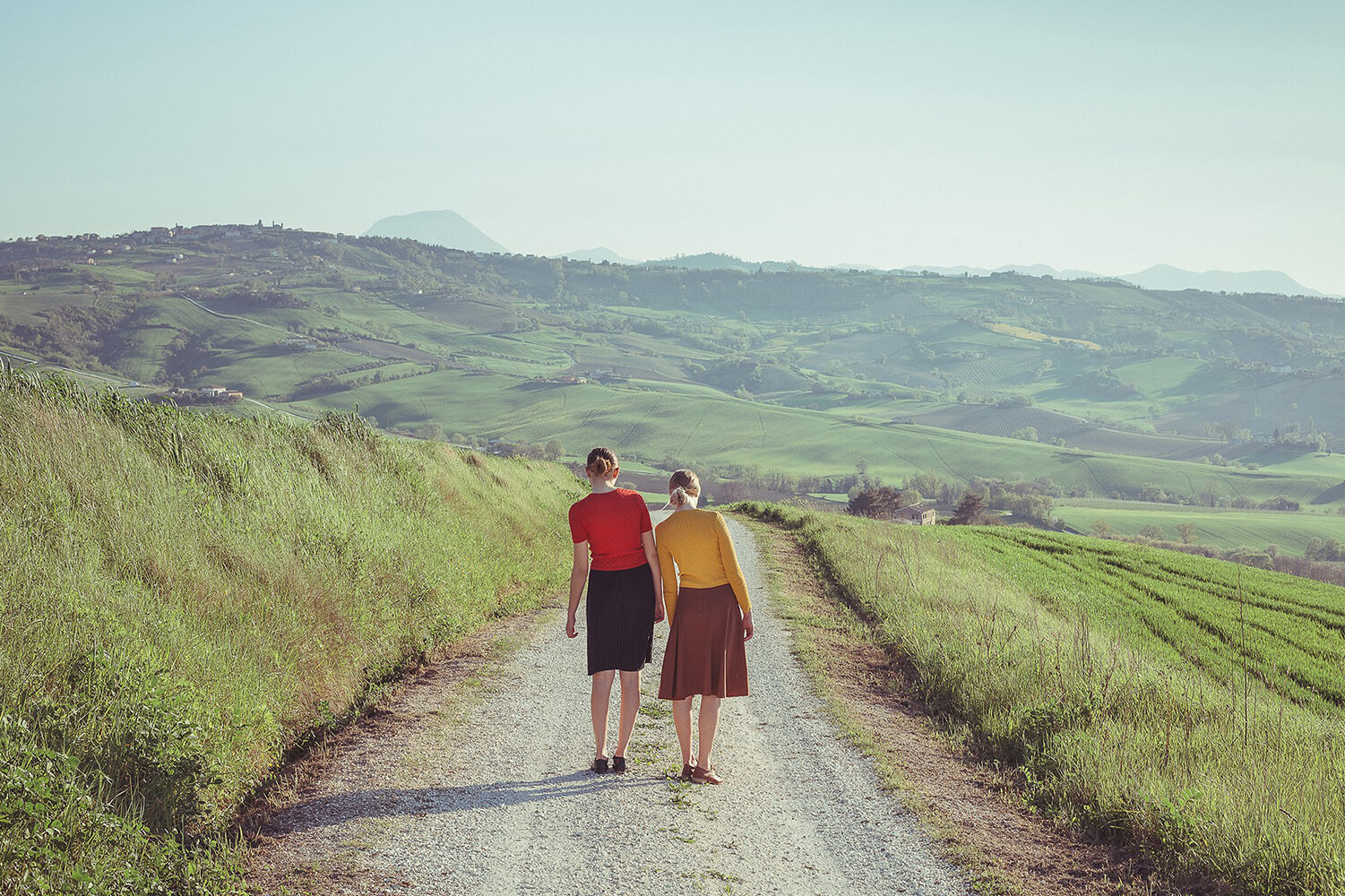
“Here we’re presented with a gentle, pastel-toned rural idyll, but perhaps everything is not as it seems. The awkward tilted poses of Francesca’s subjects seem to suggest something is awry – in sync with one another but out of sync with their environment. It feels light and playful but also has a touch of something eerie and unsettling, and the themes in Francesca’s poetic and somewhat abstract statement come through – science fiction, cinema, the unknown… their simple mid-century outfits creating a Stepford Wives or Invasion of the Body Snatchers feel. Perhaps it’s a metaphor for female companionship in an unnerving world, or a celebration of the layers and quirks of femininity. Regardless, it’s a successful image.” – LIFE FRAMER
Photographer statement – From the series Girls From Another Planet. An iconic embrace that has been touring the world for years, transformed and redesigned by artists from every continent has now become a large mural in Riga, a symbol of the closeness between the Latvian and Ukrainian people.
Girls who are not from this world move in space with a foreign lightness. They float, jump, chase each other in a gravity that does not belong to their world. They have feminine appearance, they are silhouettes outlined by bright robes, or romantic and diaphanous. Their body is the gravitational center of history, represented in places that from familiar are turned into unknown. The sea, the mountains, the fog, the countryside are there for the first time, like landscapes never seen before. Girls From Another Planet is the story of new romantic, visionary, pop-psychedelic, perturbing heroines with a cinematic power. They are women who fall to earth, new representations of a feminine and revolutionary science fiction.
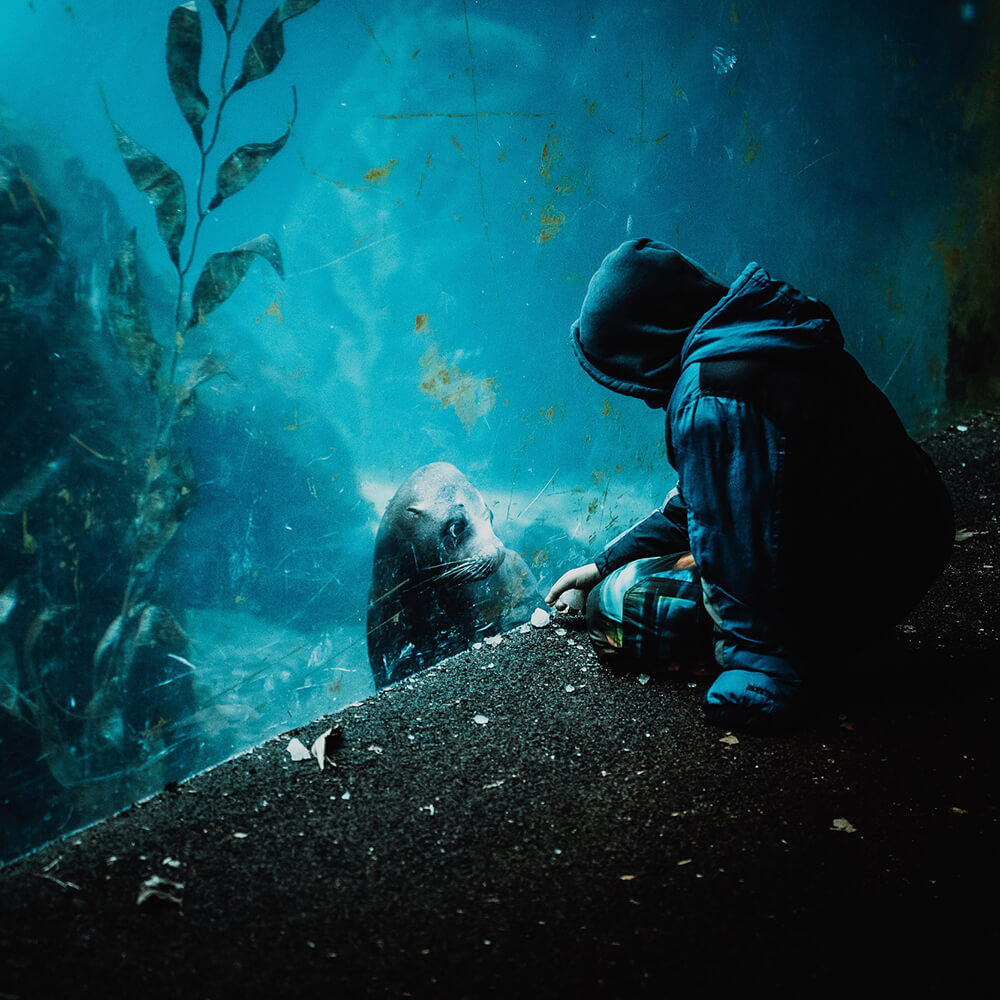
“This isn’t a complicated image – of a boy interacting with a sealion through the glass at Smithsonian’s National Zoo in Washington D.C. – and yet it is very well-observed, with the tight framing and vignetting creating an intimate feel. Animals in captivity can often engender feelings of conflict and sadness, but the dark palette, scratched and littered environment and anonymous boy creates something particularly allegoric and prophetic – like a glimpse into a dystopian future where these are the only places such creatures remain, the light glow and flattening from the thick glass almost turning the aquarium into a projection. It’s a powerful image, that resonates well beyond a snapshot from a family day out.” – LIFE FRAMER
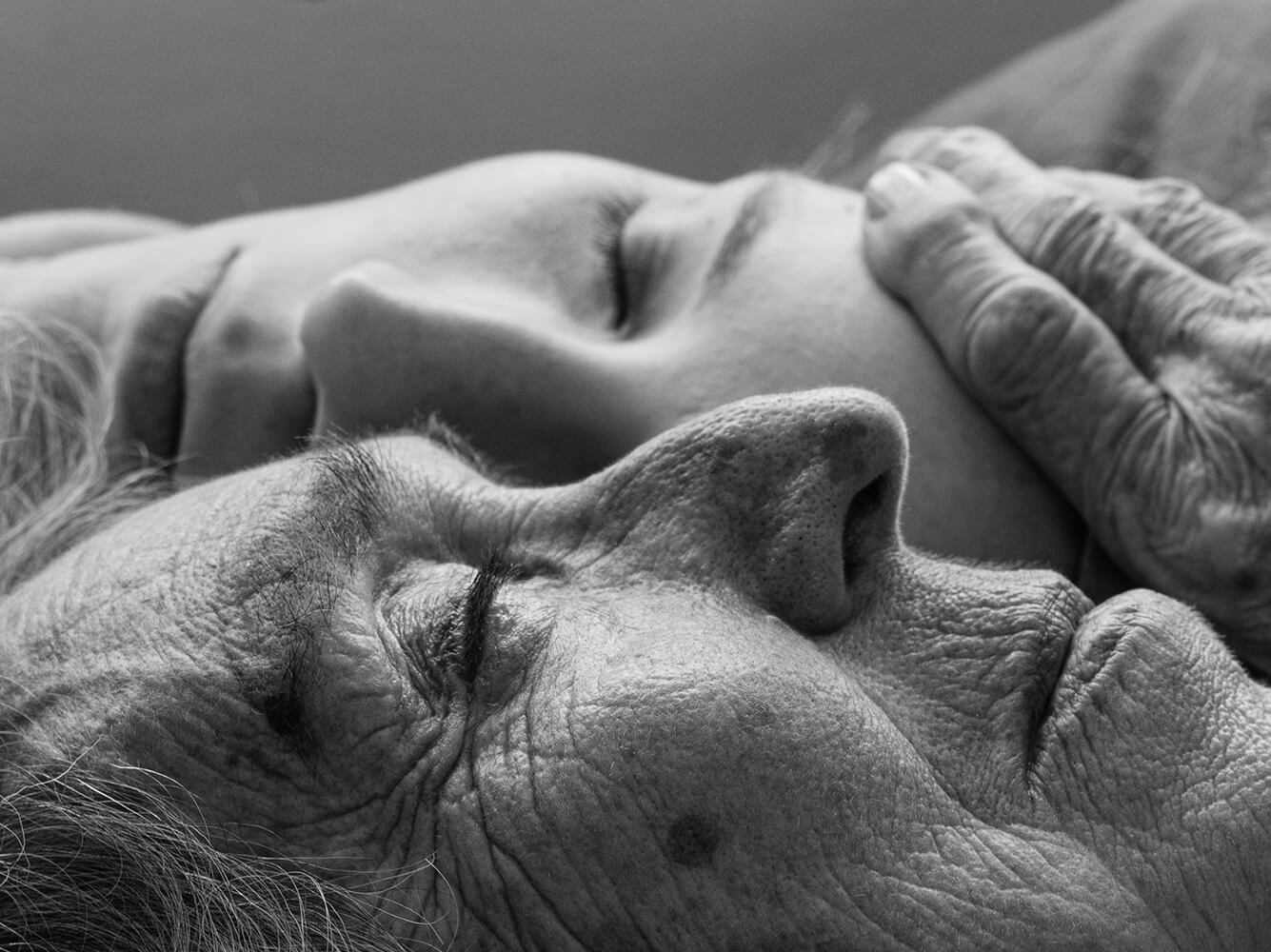
“A beautifully observed and tender portrait of mother and granddaughter, where the two asymmetric faces create an almost Ying and Yang shape, albeit here the forces at play seem aligned rather than in opposition. The best black and white photography is used to distil an image down to its bare elements, and that’s just what Paula does here. We see light, texture, a tactility and a rich emotion – a delicate embrace and a powerful love between these two women.” – LIFE FRAMER
Photographer statement – Black and white portrait of my mother and daughter resting together. Two generations of women linked in one image, by a third woman of the intermediate generation who takes the photo, me.
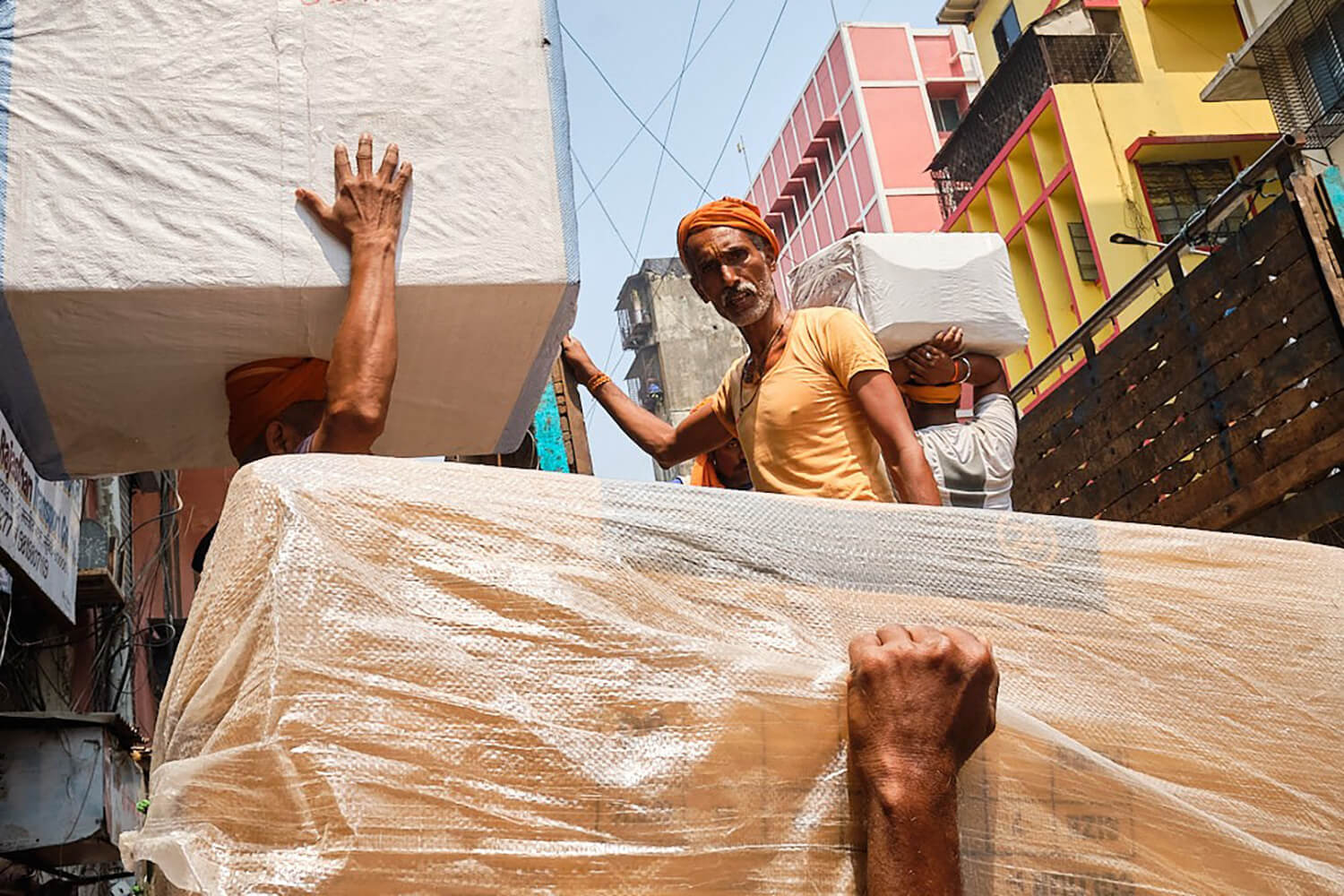
“Titled simply “Just Some Shapes and Lines, Mumbai 2022”, Suresh’s image is a wonderful example of dynamic, candid street photography, where the elements momentarily fall into balance before resolving into chaos again. For just an instant these hands, boxes and buildings align to create a satisfyingly geometric composition with the main subject framed centrally and surrounded by pastel tones, and with a glimpse of eye contact and an expression that communicates so much. The modest, nonchalant title is apt for describing something that might seem simple, but is in reality a form of photography that takes skill, patience and an eye most of us don’t have. Brilliantly done.” – LIFE FRAMER
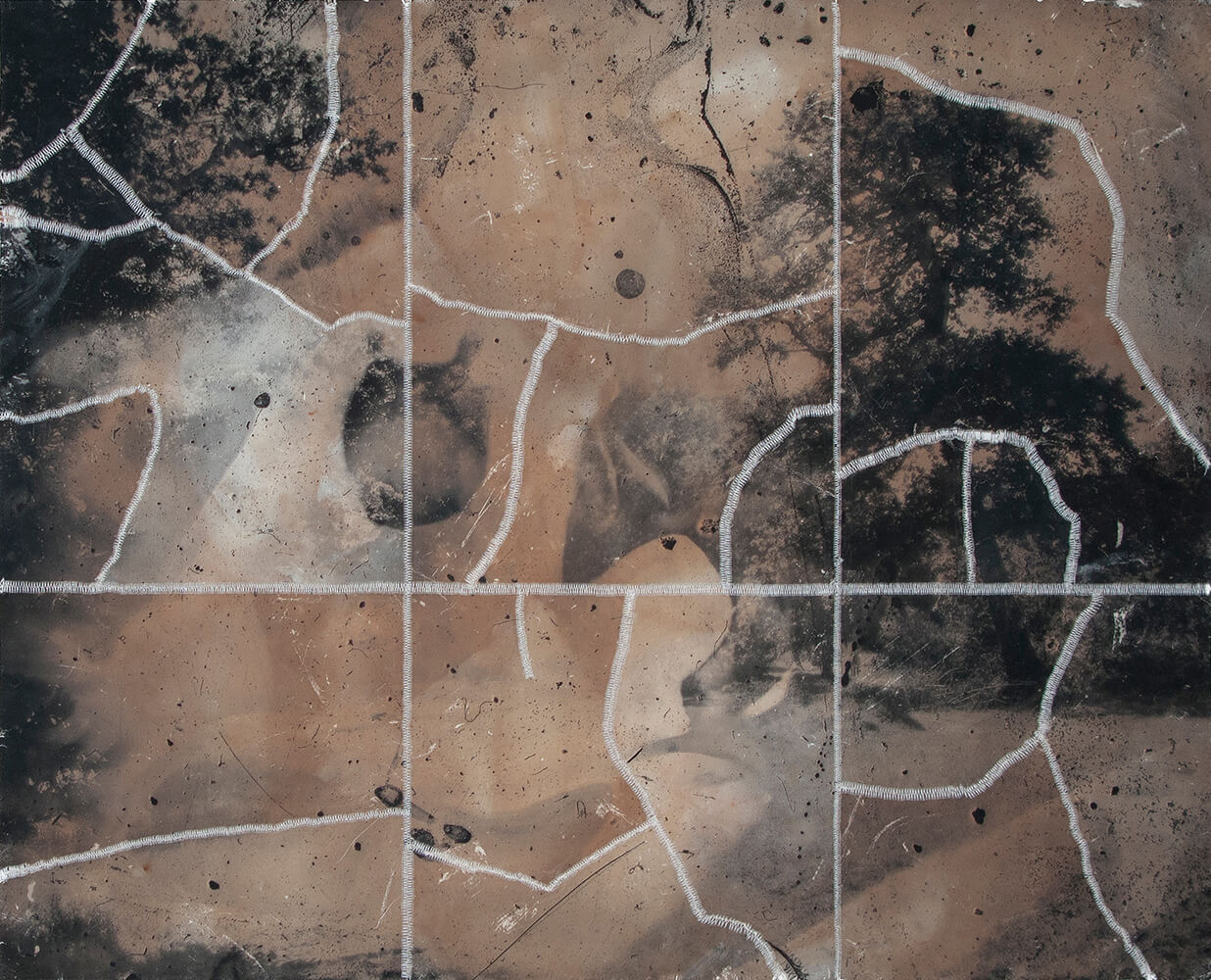
“On first glance Matt’s image appears to be a high aerial shot of a road network in the wilderness, but the careful stitching and the trees and textures of the background begin to reveal themselves. The result is a patchwork of imagery and textures which, built with the highly creative and experimental processes Matt describes in his statement, on the one hand celebrates the beauty of the natural world, but on the other speaks to its fragility in our hands. There is a healing process at play it seems, and the symbiosis of subject matter and method results in something engaging and wholly original. ” – LIFE FRAMER
Photographer statement – From the series Autumnal Glimpses, exploring human’s relationship with the natural world, impermanence and the beauty of nature’s transitory states. These photographs were made in a nearby forest and arboretum focusing on trees and organic forms. I wanted the subject to influence the work by incorporating surrounding plant matter such as fallen leaves, flowers and branches throughout various aspects of the image making process. This plant matter was laid onto negatives while scanning and used for toning the pigment prints.
One morning I found trees wrapped with string sculpted by the wind and rain. I would later attempt to mimic these abstract lines in the images using thread. During printing, an image would be split up over several sheets of paper. The fragments, each uniquely toned, are then reassembled and sewn together with thread highlighting the intersections. The image chronicles traces of the process – scratches, fingerprints and repairs remain a part of the image.
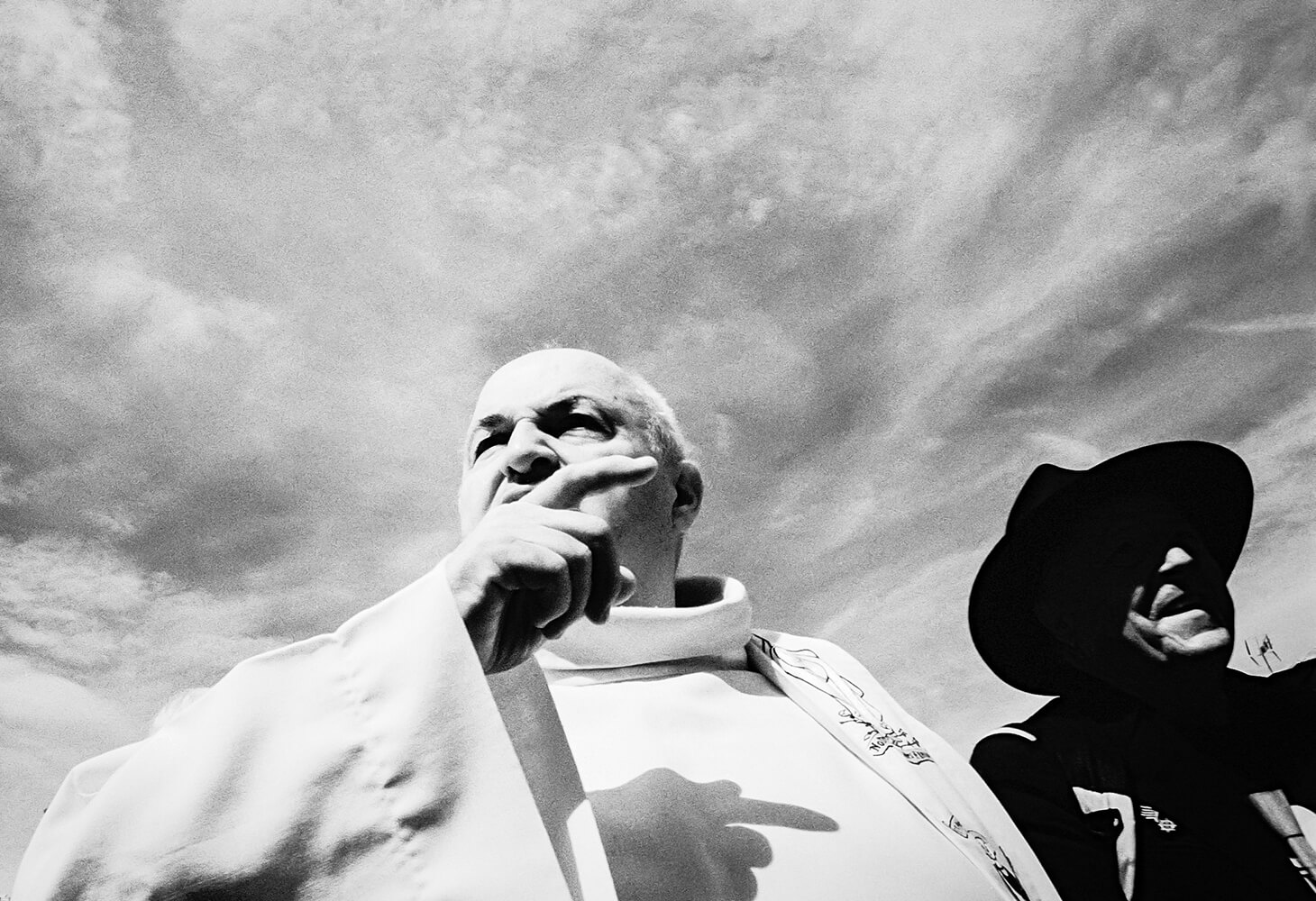
““…the sacred and the profane mingle in one manifestation” is a profound way of describing the modern incarnations of many religious festivals, and the two subjects Andrea captures here – one in black silhouetted in shadow, the other in white and gleaming in the harsh sun – seem to almost personify that idea. It’s an intriguing image which feels immersive – capturing an energy and spirit of the festival, heightened by the low, upwards perspective, even if it explains little to the viewer. We’d love to see more.” – LIFE FRAMER
Photographer statement – From the series Des Gitans. In Europe there is a unique event: The great gypsy festival in the Camargue, at the mouth of the Rhone (France). Every year thousands of Roma come from all over Europe to the small town of Saint Marie de La Mer. Gypsy music and dances, processions. For days, the sacred and the profane mingle in one manifestation. It is May 24th, thousands of gypsies, dressed in colorful traditional costumes, cry out their devotion to their patron saint: Santa Sara.
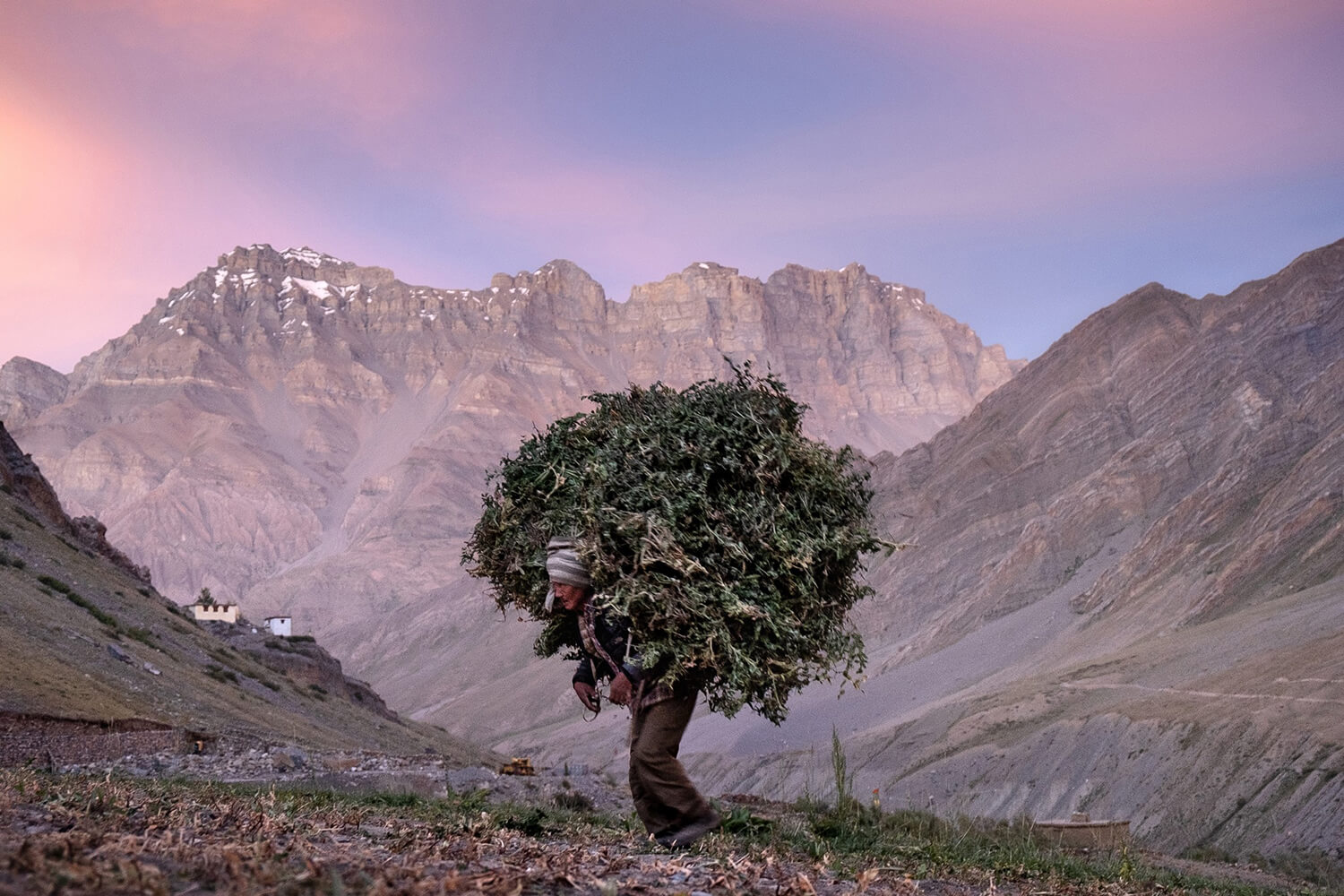
“Nicolas’ statement says it all – centrally framed against imposing mountains lit in stunning tones from the low sun, his subject is on first glance mistakable for a lone tree. It’s a nice visual twist on what is really shown – the hardship of rural life in a difficult but majestic environment.” – LIFE FRAMER
Photographer statement – The Human Tree. Rural life in Himachal Pradesh, Indian Himalayas.
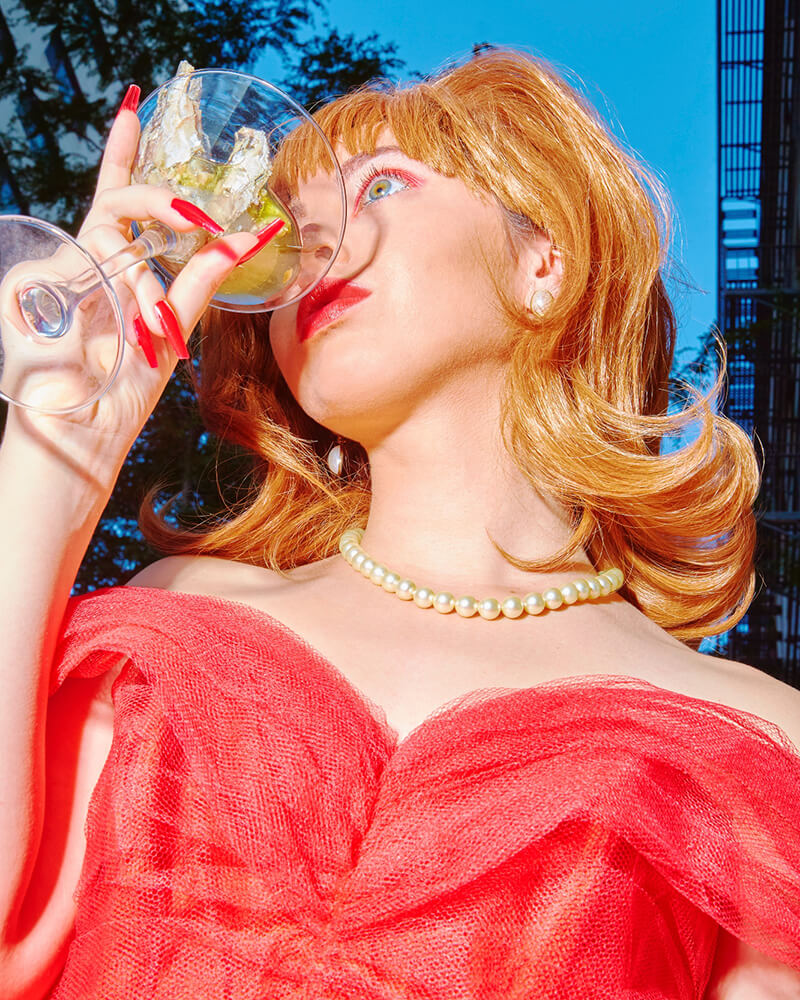
“Rachel provides no context alongside her stylized, heavily cinematic image, and so it must be enjoyed for what it is – a bright, shiny and playful portrait that plays with ideas of celebrity culture, the male gaze and bygone Hollywood glamour, shot from a low perspective and with a stark flash as if to emulate the cloying paparazzi. Her subject’s vacant expression creates a slight unease, an uncertainty at odds with the exterior trappings of success, which perhaps says a lot about the female condition.” – LIFE FRAMER
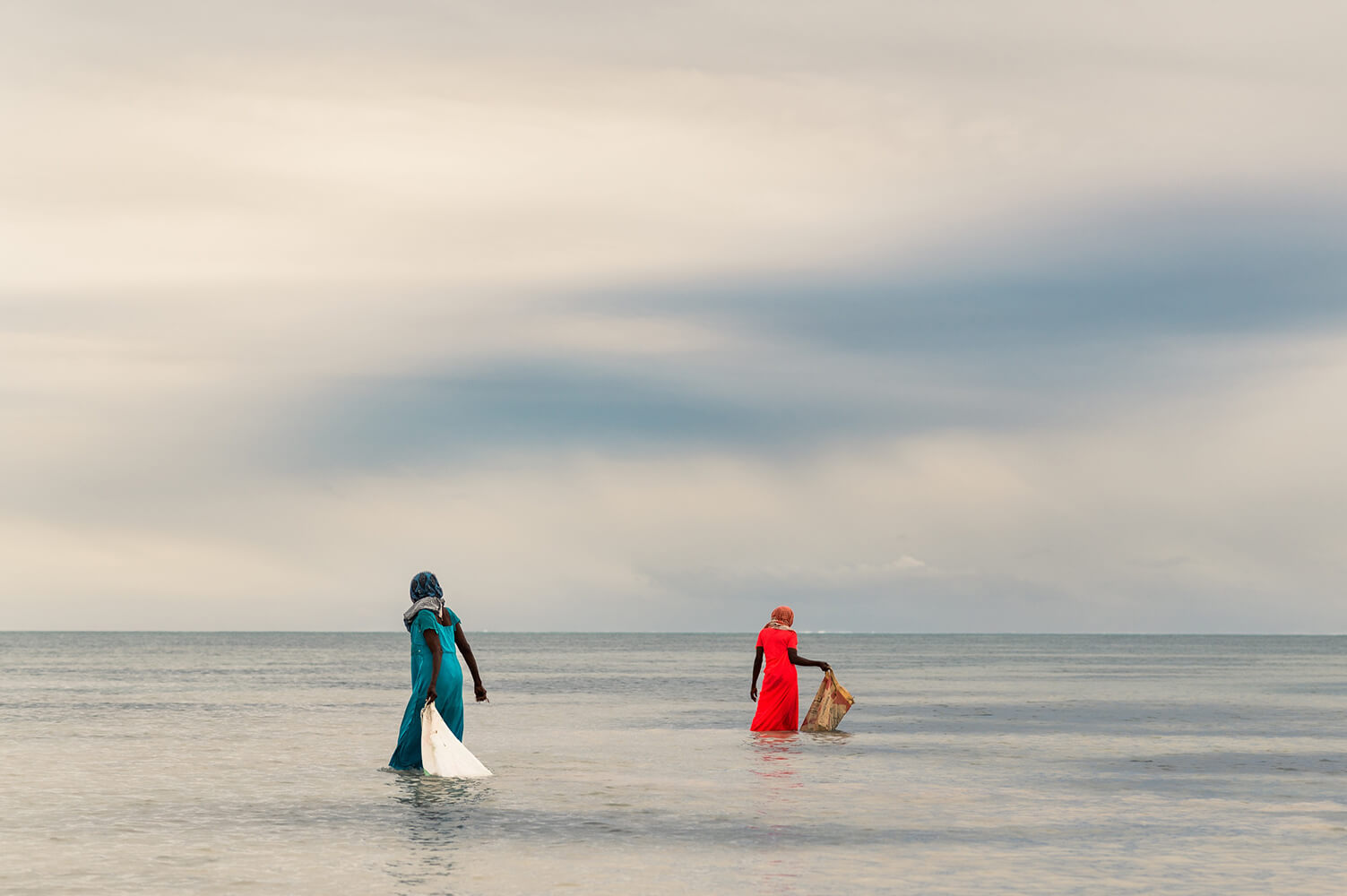
“Patrizia’s minimalist composition of women collection seaweed on the Zanzibarian coast against a huge sky has a serene beauty and simplicity, reminiscent of a painting. Against a wash of homogenous color the saturated tones of the women’s dresses give the image a weight and depth, drawing the viewer in. It’s a well-observed moment that channels some of the graceful labor she describes in her statement.” – LIFE FRAMER
Photographer statement – Seaweed Dancers, Zanzibar. Colorful and graceful figures, the women of Jambiani wade out at sunrise to collect seaweeds from the shallow water and tend their seaweed farms. Women spend hours everyday walking waist-deep in the water with slow, winding and graceful movement or sitting in the shallow sea-floor tending their seaweed gardens. Seaweeds are collected at low tide, the new seedlings are inspected, tied to ropes and hung up between stakes in neat rows, gardens are inspected, combed and the harvest is collected. A hard work done with extreme grace. Starch from seaweeds is used as base in a large variety of products in food, cosmetic and medicine industry, and is exported worldwide (with China being one of the biggest markets).
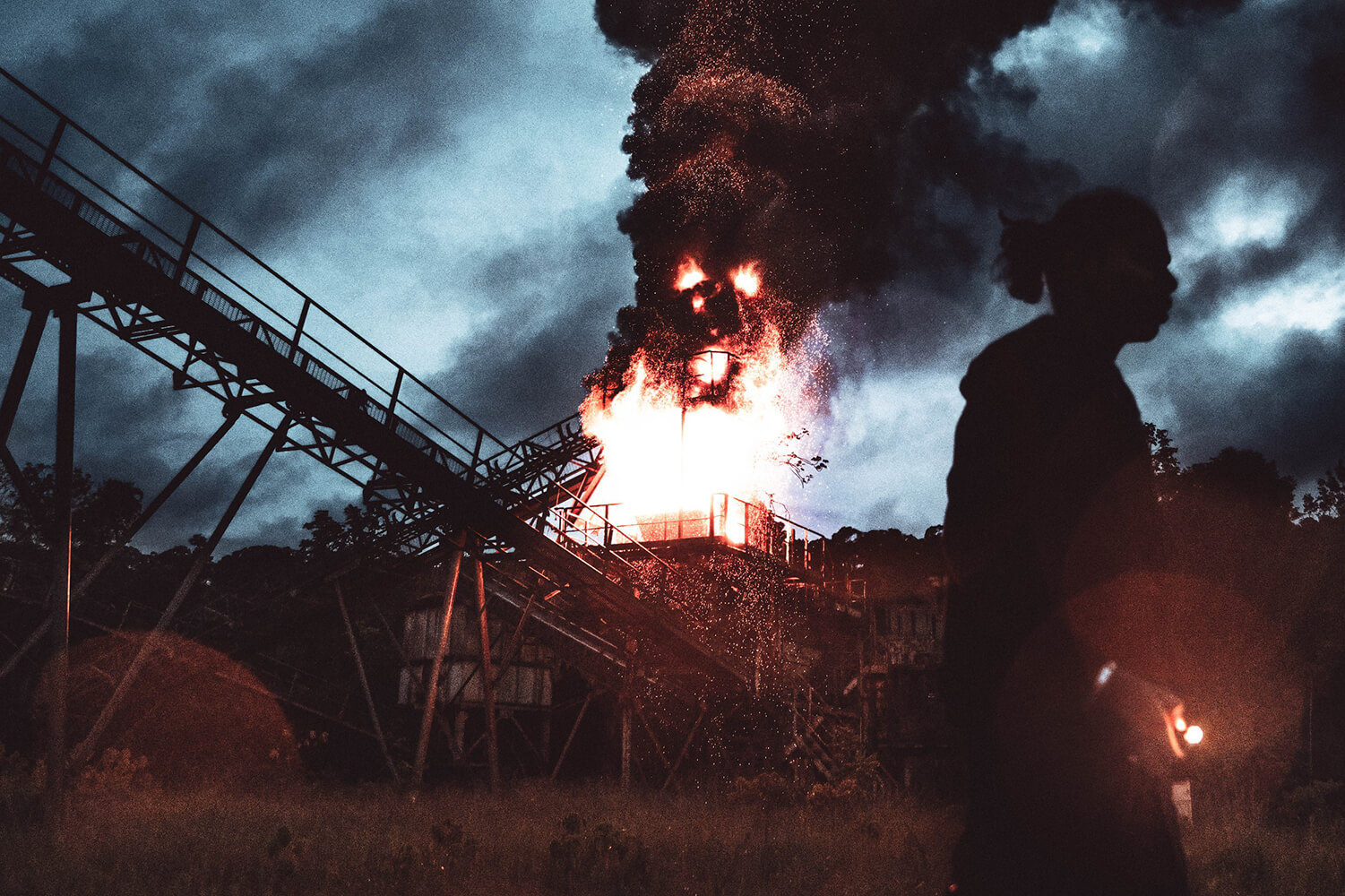
“Tanaël’s statement describes his photographic philosophy, but we’re left to guess the exact context to this particular image. With smoke, flames and shadowy tones it’s immediately arresting, and it’s only a moment later that the silhouetted figure appears. Is he scoping the scene? Perhaps fleeing it? And is Tanaël an active participant or a passive bystander? The lack of answers act to heighten the intrigue, but we’d love to know more.” – LIFE FRAMER
Photographer statement – Pyromane. I like to show the context, tell a story, create a setting and a singular atmosphere in which my model evolves. I refuse that my portrait photo is limited to only a beautiful model well dressed with only bokeh as background. I want the viewer to travel, to ask questions and to feel an emotion. I want him to be scared, intrigued, or disturbed by my photo, I want him to be emotionally invested. That’s why the overall mood of my image, or its setting, often takes precedence over my model.
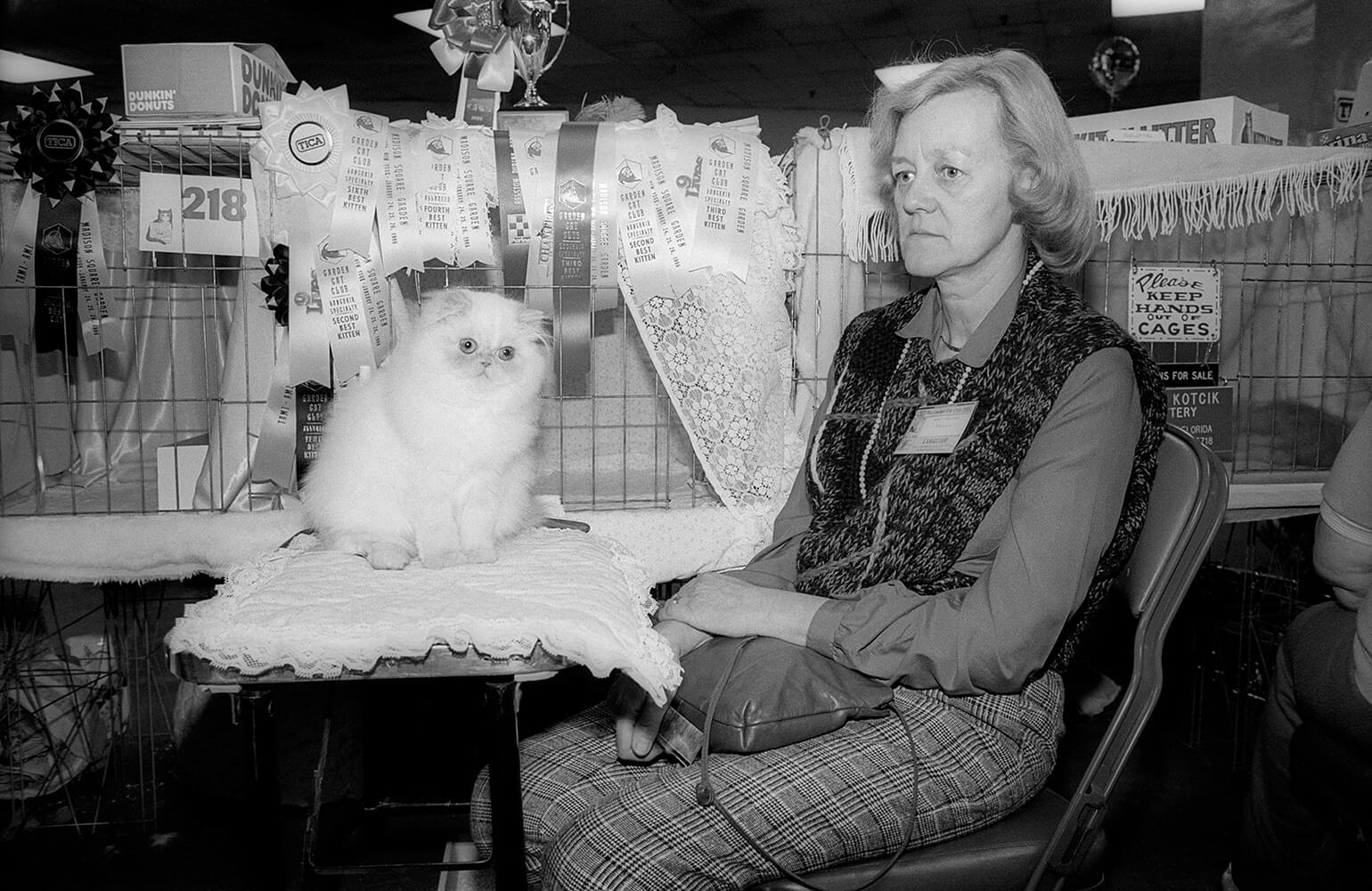
“A wry and amusing view of a cat show in New York, where the hordes of trophies and rosettes cannot disguise the mundane backstage reality. The cat’s vacant, distant expression, echoed in that of its owner, is just priceless – the scene both corroborating the adage that pets look like their and share personality traits with their keepers, and also highlighting one of the strange and idiosyncratic ways we choose to spend our time and validate our worth.” – LIFE FRAMER
Photographer statement – Untitled (Cat and Owner at Cat Show), New York City, USA.
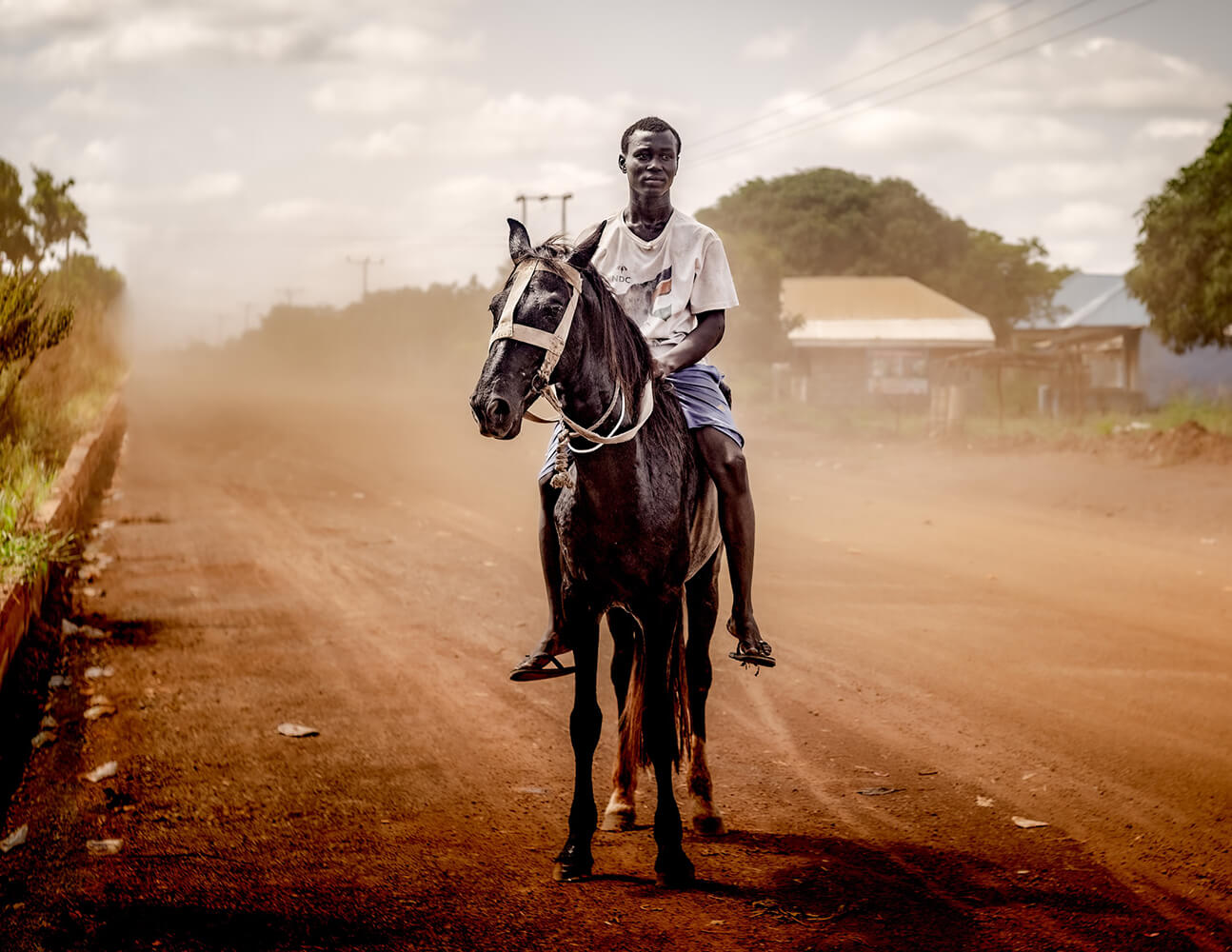
“Aesthetically, this is a stunning image – the horse and rider picked out in bright light against a background blurred and foreshortened by the dry dust. But the context provided by Lieven in his statement – the history of slavery in this Ghanaian town – adds a layer of deep poignancy, asking us to re-examine his subject’s expression and the dirt road as a metaphor for this journey – both in slavery and since its abolishment. A powerful frame.” – LIFE FRAMER
Photographer statement – A lone rider close to the water wells where captured Africans were washed and oiled with shea butter before being sold on as slaves at the central market in the town of Salaga. It marked the start of their life as a slave, a journey into bondage, death, and indentured labour. Most of them wouldn’t survive. Horses were one of the commodities that were in high regard and would be exchanged for captured slaves.
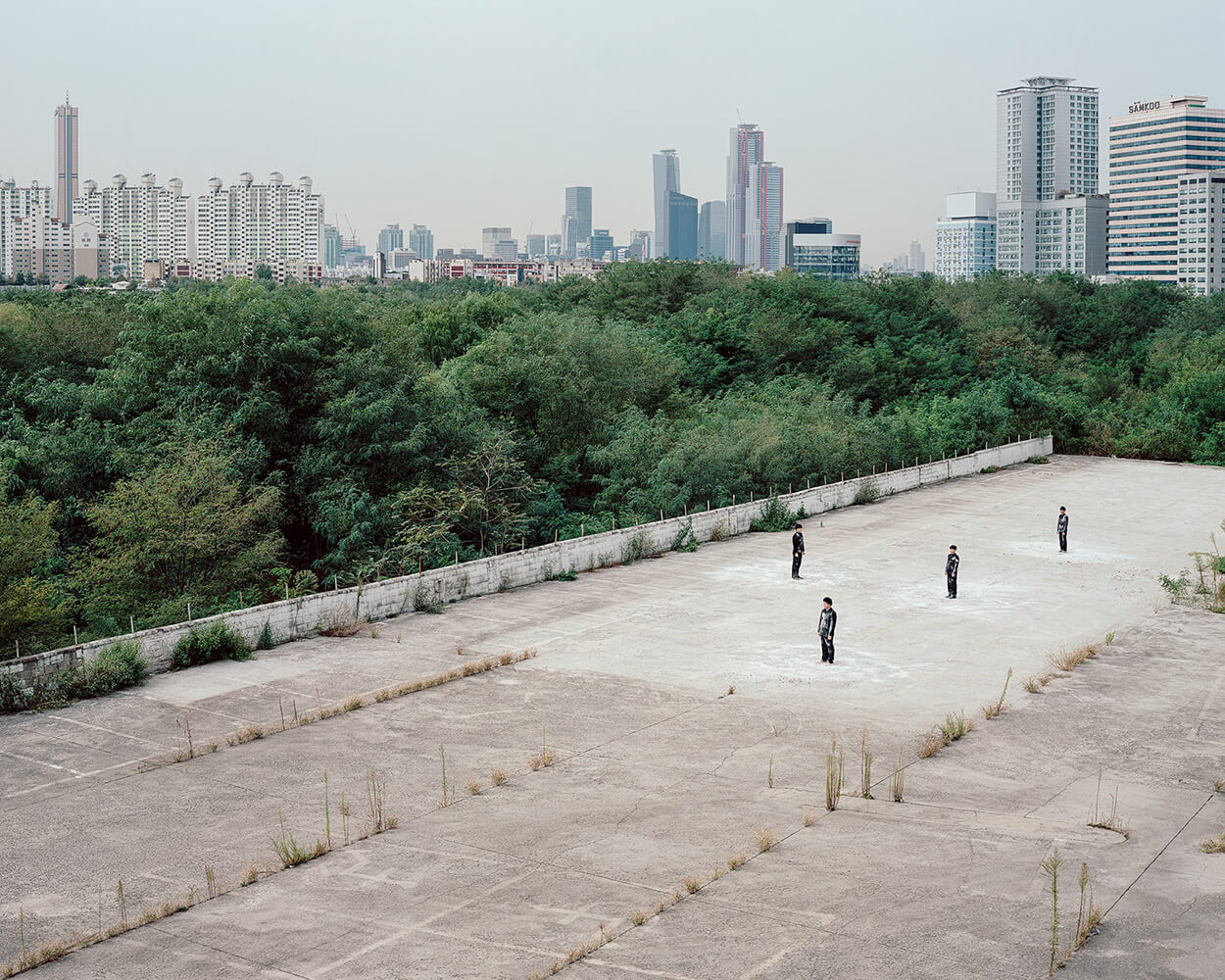
“The themes of Seok-Woo’s work – the fear of impending adulthood and feeling alone amongst many – are apparent in this well composed image taken in an abandoned carpark on the outskirts of Seoul. The four young lining up in regimented fashion, occupying an empty space away from the hustle of the city and everything that implies, represent his ideas in a thoughtful way – the resulting image being memorable for its form and ambition.” – LIFE FRAMER
Photographer statement – From the series Wandering, Wondering. A story for all of us becoming adults, getting more socialized, and living in a systematic social structure. No one has forced or oppressed our lives. Without looking back, we live in a life that fits already into the familiar flow, following only dreams and ideals we’re aiming for, the naturalness of time that goes by constantly. Through this work, I have a chance to explore my passing 20s and the gap of familiarity.
These produced images are stories intended for the young who cannot adapt to the social structure which is changing quickly, above all men in 20s, taken in abandoned spaces to emphasize feelings of loneliness and emptiness. I was concerned about relationships that people build up with others and mainly intended to explore the way people interact and the social principles involved in it, using gesture language. I hope that not only 20s, but everyone who encounters this work will be able to sympathize, reminiscing about their past or expectations for their future.
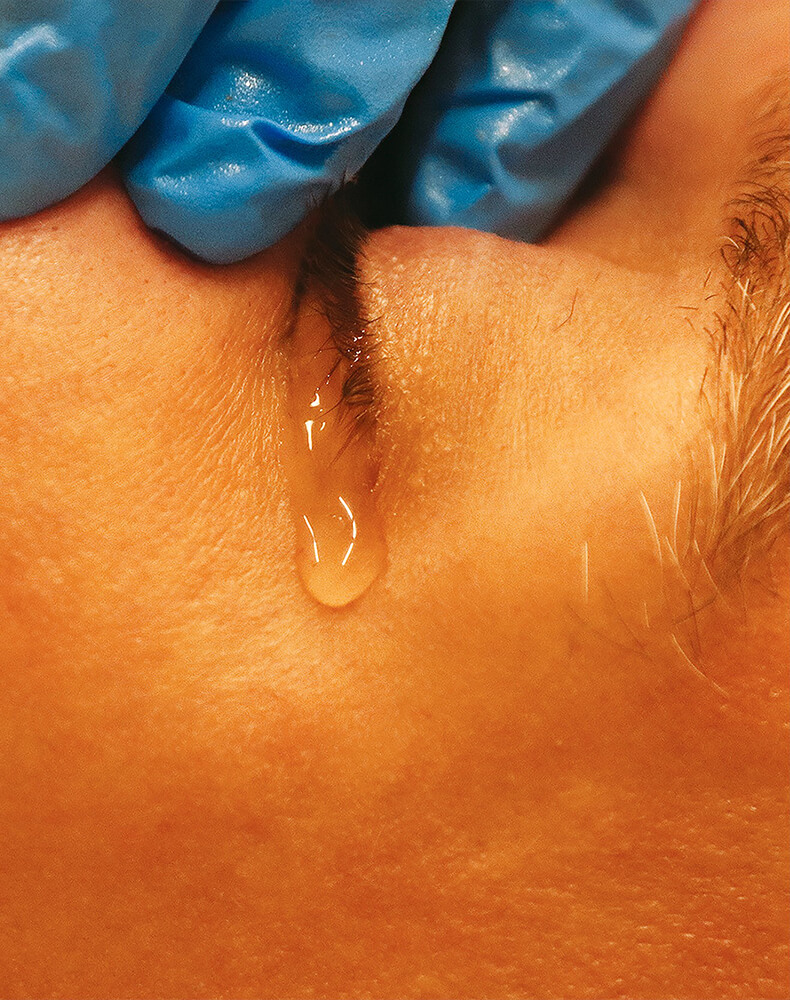
“Images of dead bodies are a contentious subject to photograph given questions around respect and consent, and also a difficult thing to confront as a viewer. It is clear from her statement however that Justine approaches the topic with great thought and sincerity, and that is reflected in this striking image. Cropped tightly, we’re confronted with a strong juxtaposition – the cold and clinical blue surgical glove against the warm orange human skin marked by a single tear. That tear, we understand from the statement, is a substance applied by the embalmer rather than a tear itself, but nonetheless it feels profound – symbolic of the sadness of an end of life here photographed. It isn’t an easy image to digest, but one that raises deep emotion and reflection in the viewer.” – LIFE FRAMER
Photographer statement – In order to keep the bodies from decomposing for a while, the thanatopractor, whom I have been following for several years, drains them of their blood and replaces it with a mixture of water and formalin.
My artistic work takes a rather raw look at death. I photograph and film lifeless bodies that are given post-mortem care. Dead people I don’t know. Art allows me to deal with death. I approach what Western society refuses to show me, I make visible what it wants to keep hidden. I feel the need to confront what is going to happen to all of us. In the West, in order to make death seem sweeter and more acceptable, we make up, pamper and style our deceased. We prepare them for the living.
This image best convey the feeling of disquieting strangeness I felt when I saw these lifeless bodies lying on the cold metal table. A form of ambiguity is created. As defined by Freud, this disquieting strangeness provokes in me “a particular physical sensation with an inability to distinguish the living from the inanimate”. But I also experience, as the psychoanalyst describes it, “an aesthetic feeling linked to a memory that resurfaces and causes fright”.
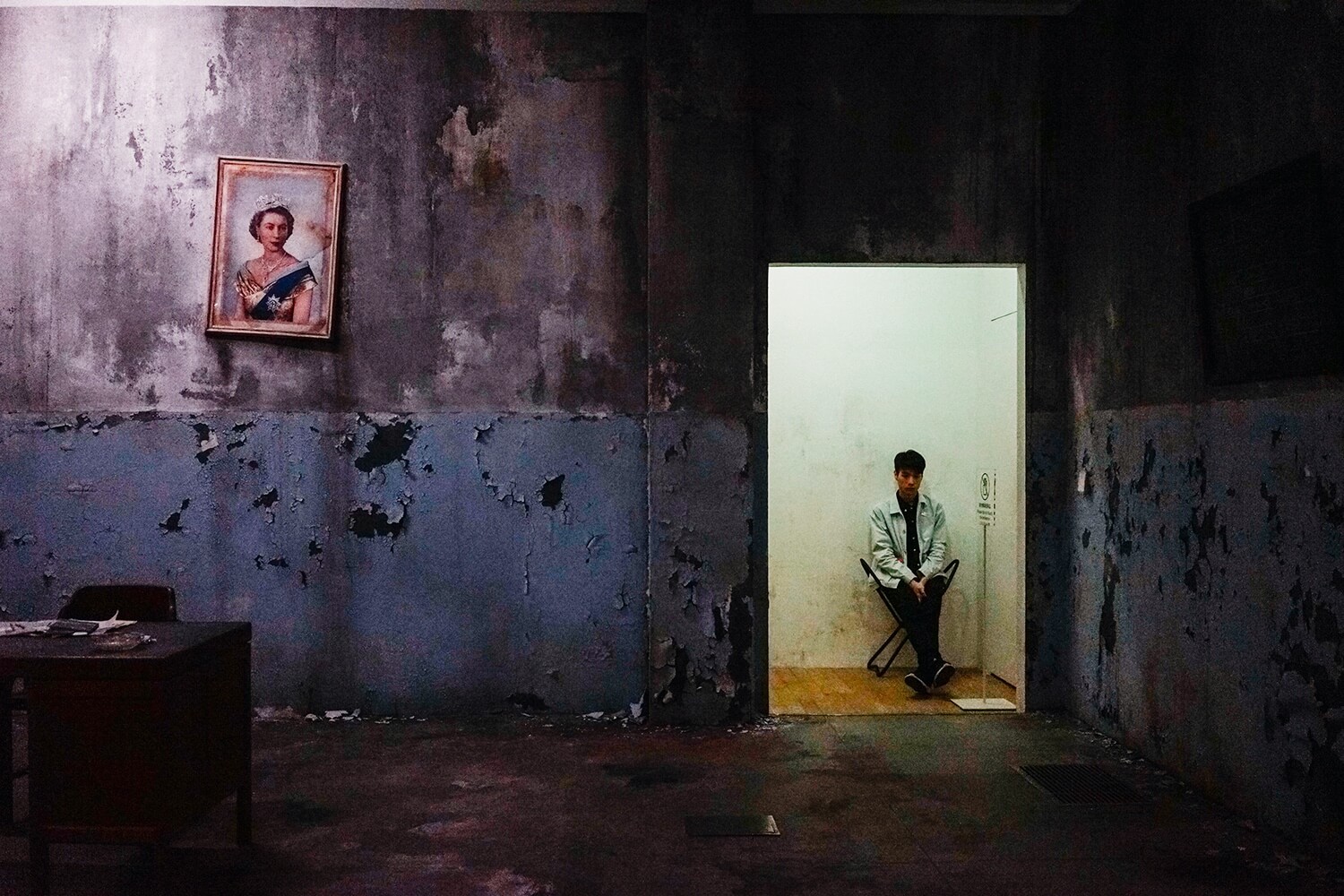
“It should be noted that this image was submitted and selected prior to the passing of Queen Elizabeth II, the UK’s monarch. Titled only “Queen Throne, Hong Kong”, this is a visually striking image, the dichotomy between the opulent portrait and dilapidated bureaucratic environment raising many questions in the viewer around wealth, history, colonialism and legacy. Composed with a sort of asymmetry, the seated man framed in the doorway rests on his own ‘throne’, and with Hong Kong having left the Commonwealth in the 1990s, it feels like he’s an invigilator to a museum of a bygone time. Greg provides no context to the image and we’d love to understand more, but as presented it raises questions worth pondering, particular as Hong Kong faces political pressures from China, and of course with the Queen’s recent passing there is an added poignancy. ” – LIFE FRAMER
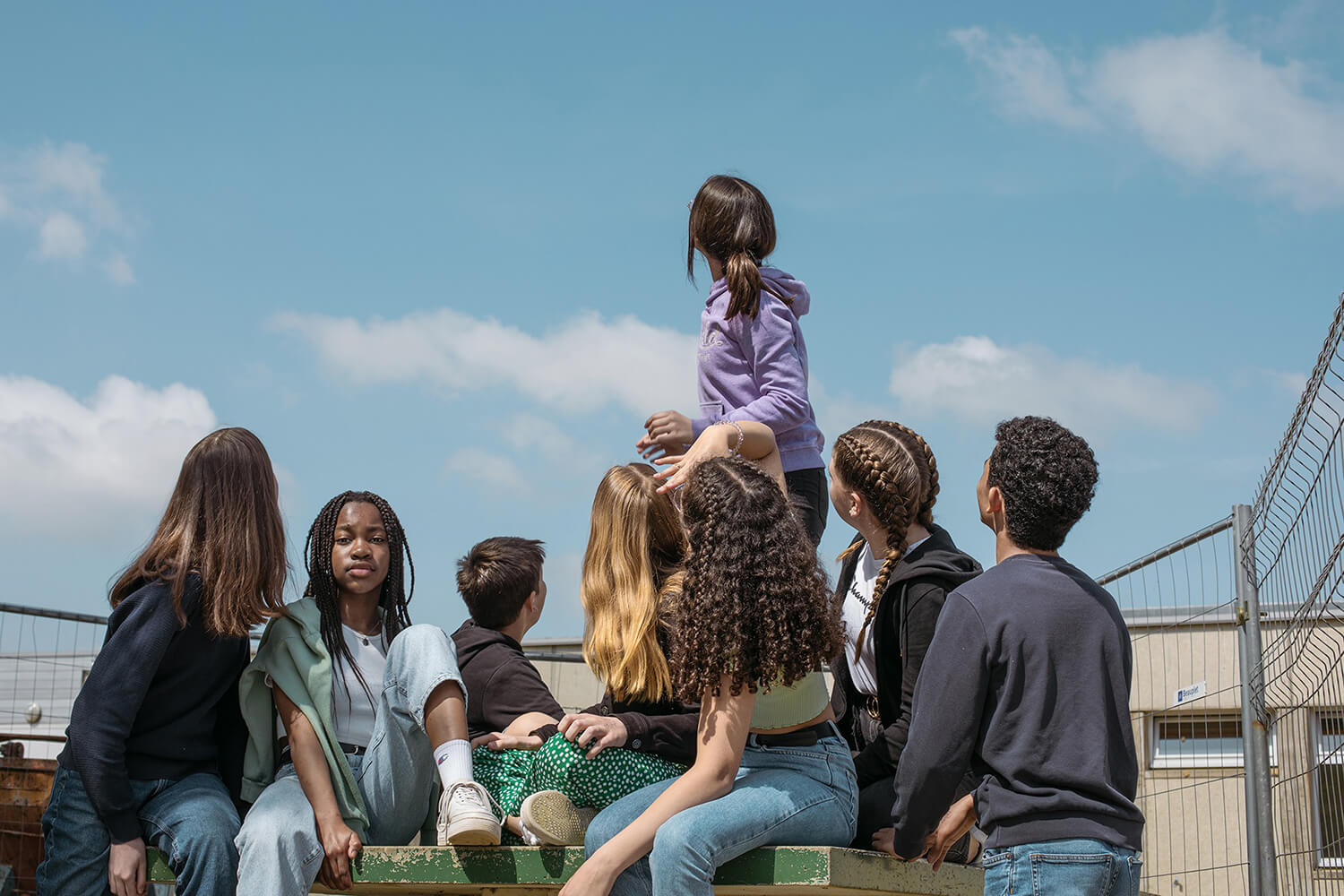
“Francesca’s statement eloquently describes the context for this image – her desire to photograph today’s teenagers, celebrating and preserving the moment as they move forward in an increasingly tumultuous world. Reflecting that, there’s something quietly momentous about this composition, the arrangement of bodies and palette evocative of a renaissance painting, and the poses – one subject looking towards us, the rest upwards and outwards towards the sky – somehow redolent of this liminal state, “a generation about to transform”. It’s beautifully done – a cleansing process for Francesca who described herself as an unhappy teenager, and a reminder to the viewer that there is plenty to feel hopeful and optimistic about.” – LIFE FRAMER
Photographer statement – From the series Teenagers of the 21st Century. I have been aiming my lens at teenagers for a few years now, inspired by People of the 20th Century, August Sander’s photographic work, and driven by the desire to tell the story of a generation often overlooked. The reason for this choice lies in the opportunity to give them a voice in a delicate moment in their life, so full of fragility and contradictions. I was an unhappy teenager, that is why I want to listen to them, look at them, meet them in the complicity of the shot, in the power of the portrait. I see through them in an exchange that brings me a feeling of renewed youth. What they wear, how they move, their gestures, their glances, their fear or boldness in posing in front of the lens, their way of speaking, everything interests me, intrigues me. I enjoy all of it.
I would like to leave the image of a suspended, fleeting and marvellous time to the portrayed teenagers. I would also like to leave the representation of a generation about to transform into the women and men of tomorrow to the present, as well as an iconography that, looking back, will allow us to analyse who we were, in the future. Finally, I’d like to give myself the chance of superimposing their lives over mine, in a timeless, non-judgemental exchange. Teenagers of the 21st Century are girls and boys between the age of 13 and 19, portrayed in the street, at school, at home, in the places of their everyday life, shot during my artistic residency in the community of Mayenne, in the north of France.

“Horses often make magnificent subjects for photography and here we’re a part of a silent night-time encounter, a brief and atmospheric moment of union. The foreground shrubbery and heavy film grain give this poetic image a tactile quality – an image to be felt as much as viewed.” – LIFE FRAMER
Photographer statement – Midnight from the series The Embrace. From an emotional visual journal, an attempt at capturing ephemeral moments where the line between dream and reality, fleeting memory and oneiric vision, raw nature and the human body are blurred and barely visible.